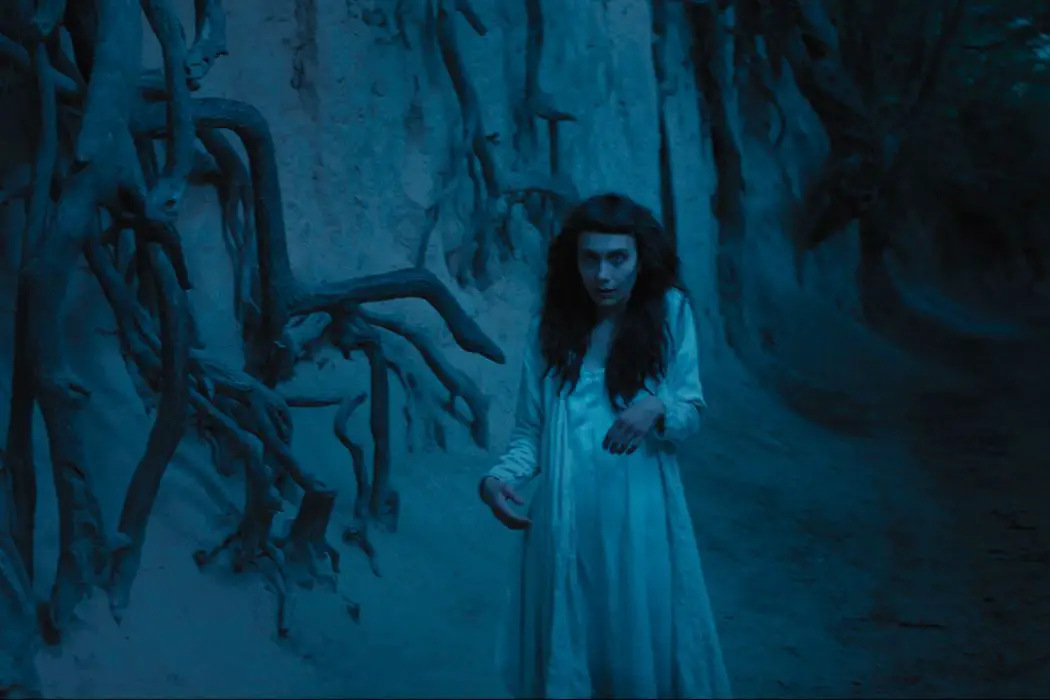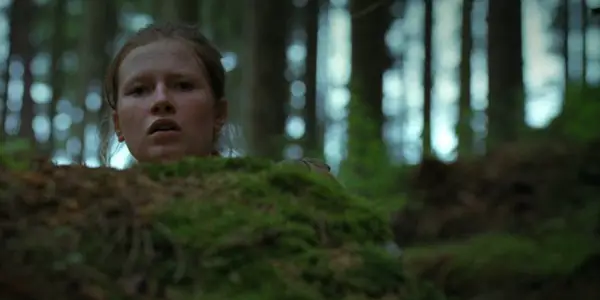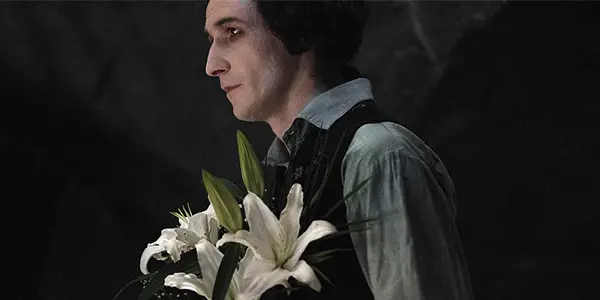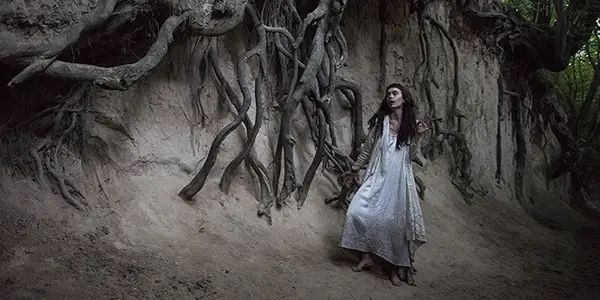SXSW Review: FIELD GUIDE TO EVIL: Loses Its Way, But Still Has Fun

Jax is a filmmaker and producer, and a film &…
The horror genre has long since allowed for deeper, occasionally exploitive, explorations of various cultures worldwide. Many of the stories brought to life on the screen find their source rooted in one folklore or another. Such is the simple thesis surrounding the structure of Field Guide to Evil, which I got to check out while at SXSW Conference and Festivals. Nine directors contributed eight short segments to construct this feature-length film which examines particular myths and legends from the various countries of origin of each filmmaker.
The anthology film is a great crowdfunding success story, finding $500,000 in funding on IndieGoGo and Microventures. The segments vary as much in degrees of successful realization as they do in content and stylistic approaches, though each segment benefits from excellent visuals throughout. Overall, the film suffers from an inconsistent tone and a disparity in talents but is nonetheless relatively enjoyable and engaging.

The Tops
The film actually opens with its best short segment, a stylistic choice which may have been to its detriment. “Die Trud” by Austrian filmmakers Severin Fiala and Veronika Franz establishes itself as understated and slow-paced but incredibly fascinating. Fiala and Franz expertly and patiently guide their audience using beautiful static shots and subtle sound design to craft suspense. Marlene Hauser does well as the lead, Kathi, but Luzia Opperman absolutely captivates the viewer as the siren-esque Valerie, who tempts Kathi despite the disapproval of their small woodland village. I quite honestly could have enjoyed a feature-length version of just this segment, with all its poise and nuance.
“The Cobbler’s Lot,” the Hungarian contribution from Peter Strickland, also stood out, largely because he endeavored to do something unique and, for the most part, succeeded. Strickland, clearly inspired by silent cinema, used intertitles instead of dialogue, though opted to include sound effects – probably a good choice for a modern audience – and the makeup and styling are very reminiscent of early cinema, particularly Méliès. Strickland also appears to be inspired by the early film experimenters; reminders of the work of Kenneth Anger flit throughout the segment, particularly in the love scene, in Strickland’s use of color and effects.

It is also worth noting the German contribution entitled “Die Rote Maus,” set in Bavaria in the 1700s. Despite some major issues with stakes (the “demon” which inhabits one of the main characters is incredibly underwhelming), as well as lighting, which appears a bit too dark in several scenes, “Die Rote Maus” slowly distills a creepy atmosphere. The short film unfolds several interesting twists, ultimately leaving the audience with some questions, which I enjoyed in this instance.
Less Successful
Unfortunately, not all the segments succeeded as much in their goals. The worst by far is the American contribution from Calvin Reeder, “The Melonheads.” When pitted against the serious tones and embedded mythological source material of the other films, “The Melonheads” with its camp absurdity feels like it belongs in a different anthology. Between wooden acting and a bizarre premise which, though is based on an American urban legend from the 1970s, fails to bring the same level of mythos and aura that the other shorts do.
Both “A Nocturnal Breath” and “Al Karsi” similarly contain some campy elements, though not to the same extent as “The Melonheads”, and this hurts otherwise compelling and creepy stories. “Al Karsi” particularly, despite its weaknesses stemming mostly from its stylistic decisions, provides an apt allegory for possible previous societal understandings around postpartum depression, a problem which still faces stigma, and this aspect rescued it a bit for me.

“Palace of Horrors”, the contribution from India by Ashim Ahluwalia also managed to convey some interesting and complicated undercurrents, this time about colonialism in India. Despite this interesting and important aspect of the film, I felt that it took too long to get where it was going. Though I commend Ahluwalia on his restraint in not using cheap scares, the suspense just didn’t build for me.
Meanwhile, the remaining segments – “The Kindler and the Virgin” and “Bitter Is the Earth That Harbors” – fall somewhere in the middle, for better or worse. Both had some interesting aspects but unfortunately failed to leave a lasting impression on me.
Field Guide To Evil: A Valiant Effort
Anthology films are notoriously difficult for exactly the reason stated above – some directors are simply more skilled than others. When a less skilled director has the film to themselves, they are not being immediately compared by the viewer to the more engaging story they just saw and they tend to be more forgiving. That said, these filmmakers should be commended for not only creating an interesting genre study but also for bringing together so many varied cultures in one film, and for creating a consistently visually striking experience.
Field Guide to Evil will likely please genre aficionados, but on the whole, it left me wanting due to its lack of tonal cohesion. However, if “Die Trud” becomes a feature any time soon, count me in, and several of the film segments make the viewing absolutely worthwhile, if occasionally tedious.
What are your thoughts on Field Guide to Evil?
Does content like this matter to you?
Become a Member and support film journalism. Unlock access to all of Film Inquiry`s great articles. Join a community of like-minded readers who are passionate about cinema - get access to our private members Network, give back to independent filmmakers, and more.
Jax is a filmmaker and producer, and a film & tv production lecturer at the University of Bradford and is also completing a PhD about Stan Brakhage at the University of East Anglia. In the remaining "spare time", Jax organises the Drunken Film Fest, binges bad TV, and dreams of getting “Bake Off good” with their baking.













